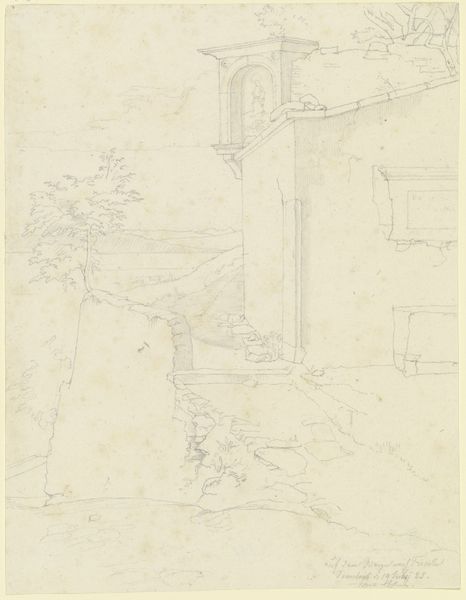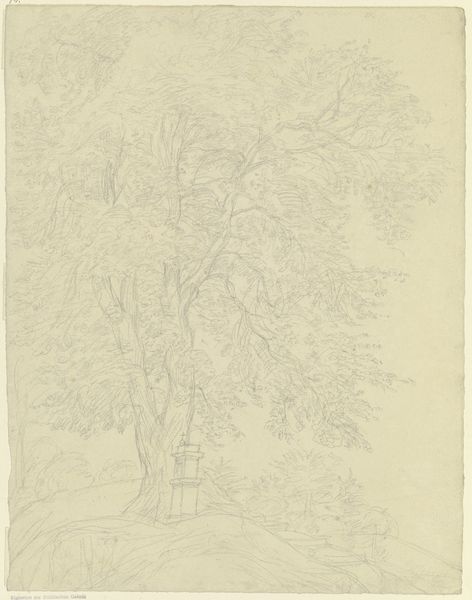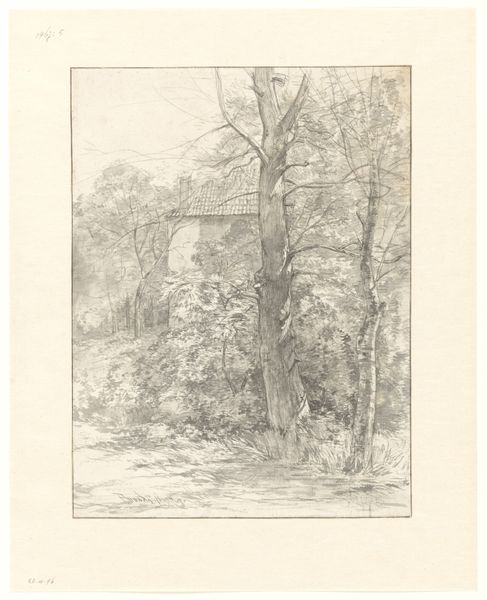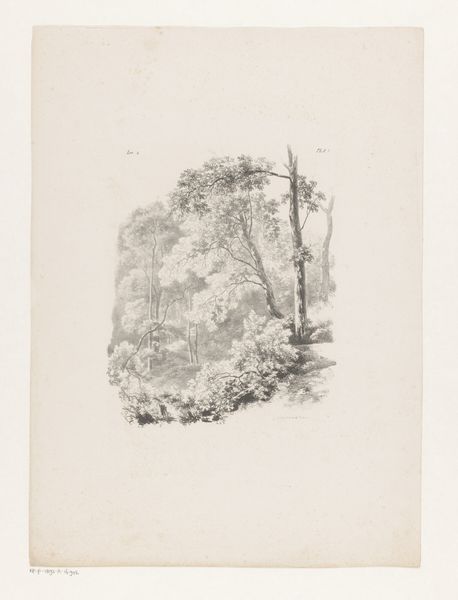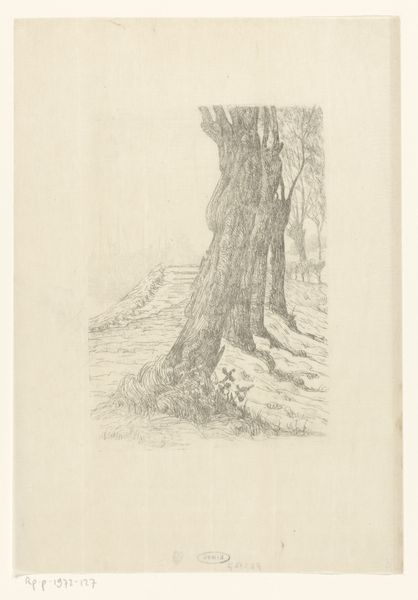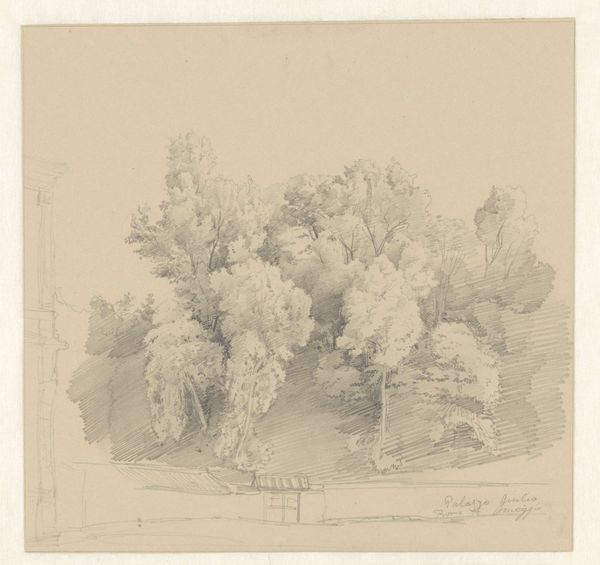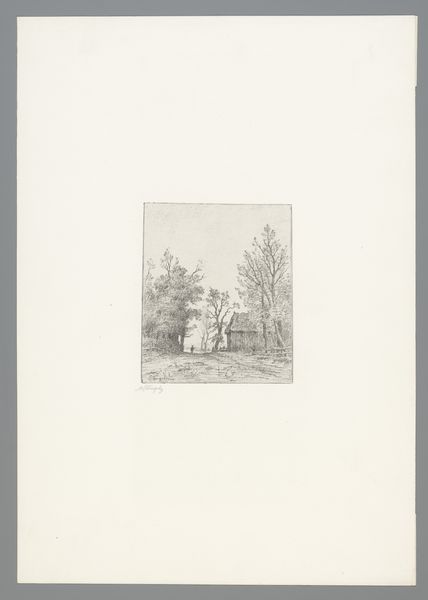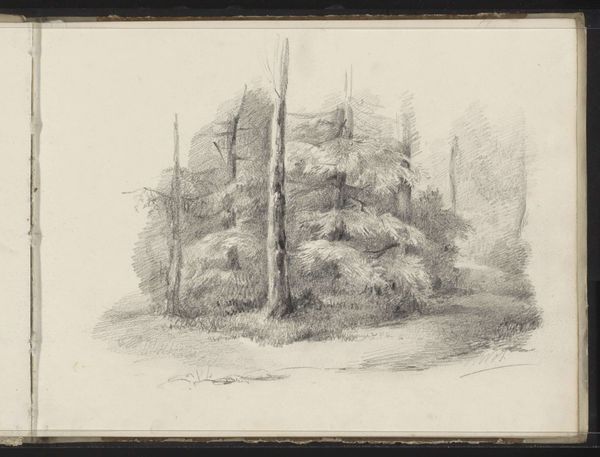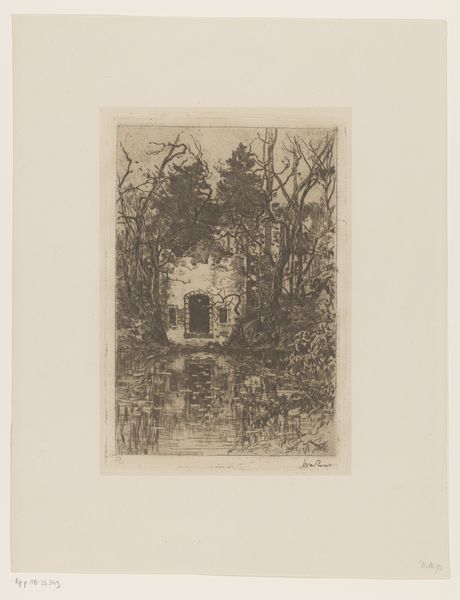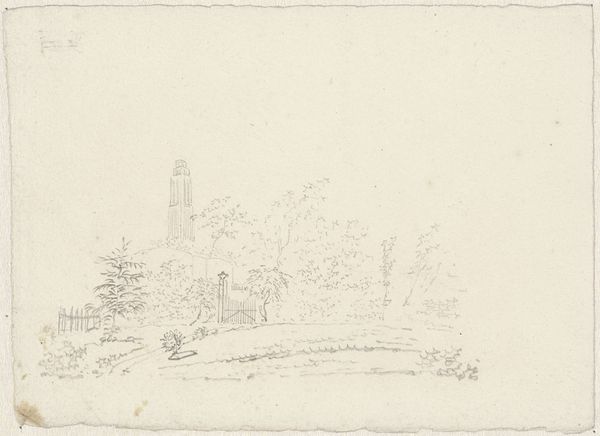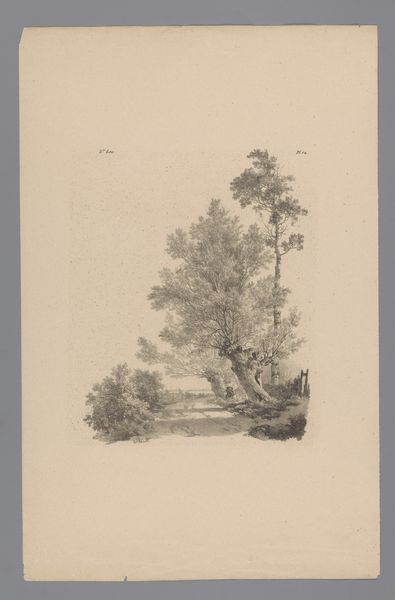
Dimensions: Sheet: 11 1/2 × 9 3/4 in. (29.2 × 24.7 cm)
Copyright: Public Domain
Editor: This is Carl Gustav Carus's "View of the West Facade of Dunkeld Cathedral," created in 1844 using pencil. The wispy lines give the whole scene such an ethereal, dreamlike quality. What feelings or ideas does it spark for you? Curator: For me, it’s a meditation on time, really. The ruined cathedral, rendered in delicate pencil strokes, peeks out from the embrace of nature. It's as if Carus is whispering, "Look, even the grandest human creations eventually surrender to the earth." Isn't there a certain beauty in that cyclical transformation? It's Romanticism at its core: nature’s powerful embrace of the transient human world. It begs the question, what is truly lasting? Editor: It does make you think about permanence! But, wouldn't painting the cathedral in its prime give a different perspective? Curator: Ah, but then you'd lose the point, wouldn’t you? The ruin *is* the statement. It invites introspection. Plus, the monochromatic palette and the choice of pencil contribute to a subdued, almost melancholic, mood, wouldn't you agree? It lacks drama, but that itself speaks volumes about Romantic ideals of contemplation. It suggests to me a personal moment for reflection on mortality, loss, beauty… maybe with a bit of dry humor mixed in. Life goes on! Editor: That makes perfect sense. I see how choosing to depict it in ruins makes it so much more evocative. Curator: It’s like nature itself is writing the next chapter of its story. Which makes you think about your own, doesn't it? Editor: Absolutely. The impermanence makes the beauty all the more poignant. Thank you for your insight! Curator: My pleasure. Isn't art wonderful in that way? Always pointing back at us.
Comments
No comments
Be the first to comment and join the conversation on the ultimate creative platform.

